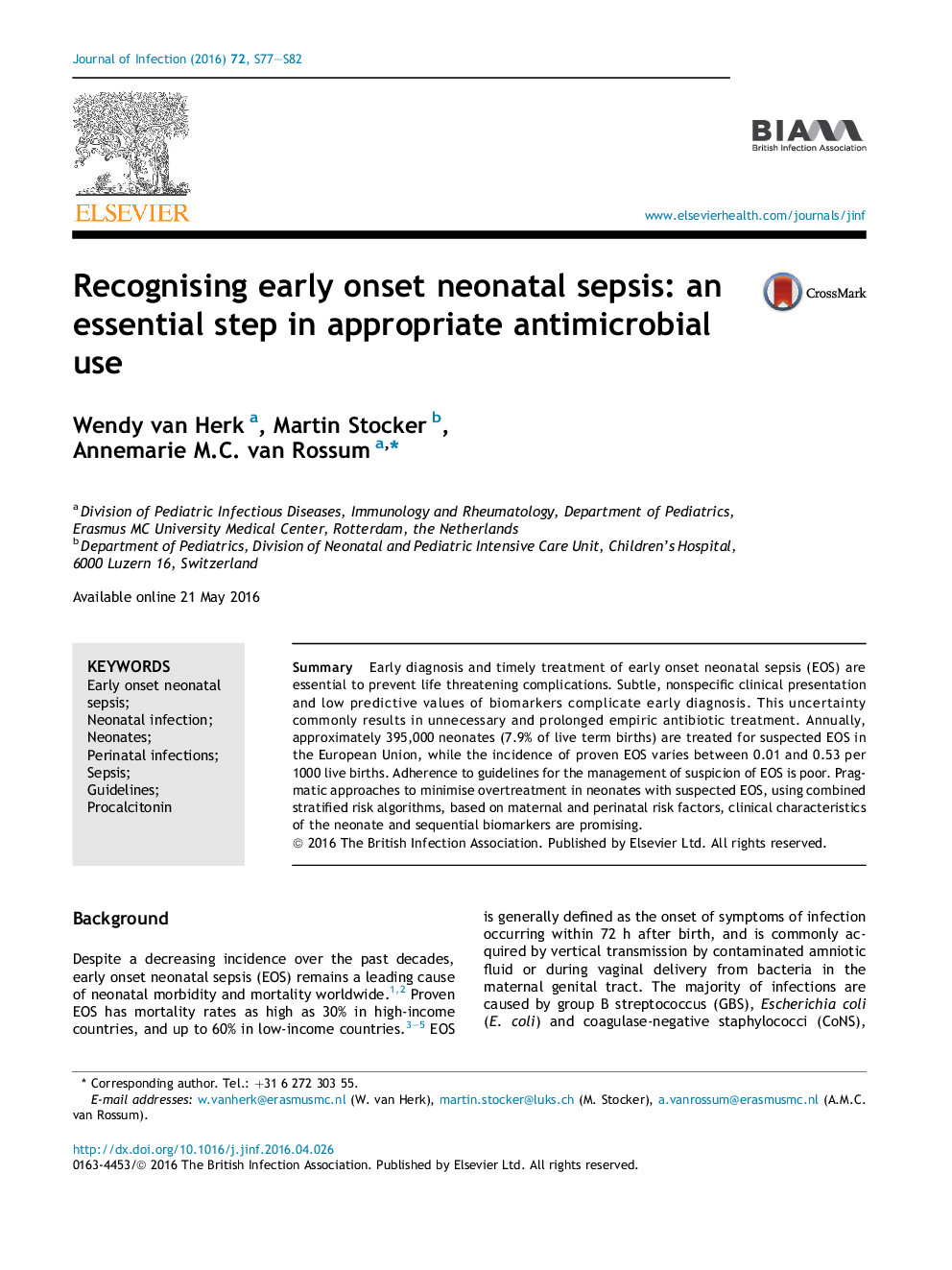| Article ID | Journal | Published Year | Pages | File Type |
|---|---|---|---|---|
| 6122969 | Journal of Infection | 2016 | 6 Pages |
SummaryEarly diagnosis and timely treatment of early onset neonatal sepsis (EOS) are essential to prevent life threatening complications. Subtle, nonspecific clinical presentation and low predictive values of biomarkers complicate early diagnosis. This uncertainty commonly results in unnecessary and prolonged empiric antibiotic treatment. Annually, approximately 395,000 neonates (7.9% of live term births) are treated for suspected EOS in the European Union, while the incidence of proven EOS varies between 0.01 and 0.53 per 1000 live births. Adherence to guidelines for the management of suspicion of EOS is poor. Pragmatic approaches to minimise overtreatment in neonates with suspected EOS, using combined stratified risk algorithms, based on maternal and perinatal risk factors, clinical characteristics of the neonate and sequential biomarkers are promising.
